More about SDC
PRAY and REFLECT
Other issues
Issue 18: Autumn 2021
Download the pdf version of this issue by clicking here.
The word ‘CATECHIST’ comes from the Greek word meaning ‘to echo’. As Catechists or teachers of RE we do not proclaim our own word. We echo the message of Jesus Christ our Lord. This newsletter aims at providing parish catechists and teachers of RE in schools some support in terms of reflections, ideas, useful resources they can use and so on. Feel free to share with other colleagues and friends. There is also a pdf version which you can download by clicking on the thumbnail below.
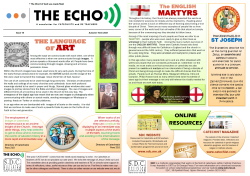
| In this issue |
| The Language of Art |
| From the Directory of Catechesis |
| The English Martyrs |
| St John Paul II on St Joseph |
| Resources |
The Language of Art
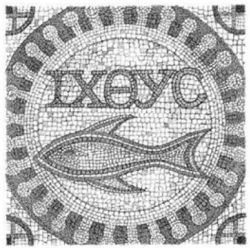
Among the ways we communicate with each other, one of the most effective is when we communicate through images. A picture speaks a thousand words after all. People have been communicating through images, drawing and art since prehistoric times.
Within the Church images have been used since its very early years. During the time of the early Roman persecutions for example, the ICHTUS symbol and the image of the fish were used to transmit the message ‘Jesus Christ Son of God, Saviour’.
The use of art continued to be used through long centuries. Christian art decorated the walls and ceilings of so many churches and cathedrals. Icons with profound meanings started to be used in prayer and liturgy. Stained glass windows also used images to portray stories from the Bible and other messages. The use of images and different forms of art continue to be used in the Church to this very day. The emergence of the digital age has meant that we now use images or photography when communicating with others on social media, sending messages on Whatsapp or posting feeds on Twitter or similar platforms.
In an age when we are bombarded with images of all sorts on the media, it is vital that we continue to make use of such a powerful tools to pass on the truths of our Faith to the next generation.
From The Directory of Catechesis
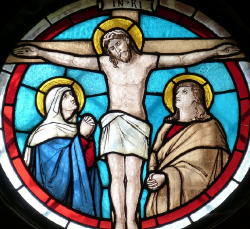
The employment of images in catechesis hearkens back to an ancient insight of the Church. Amongst other things, they help believers to get to know and to memorise the events of salvation history in a more rapid and immediate way.
When works of art are selected carefully, they can contribute to displaying in an immediete way multiple aspects of the truths of faith, touching hearts and assisting in the internalisation of the message.
paragraph 210
The English Martyrs

Throughout its history, the Church has always presented the saints as role models for everyone to imitate and be inspired by. Reading about the various saints is such an effective way of learning about being a true disciple of Christ. There are so many examples of people like us from every corner of the world and from all walks of life that stood out simply because of the unwavering way they decided to follow Jesus.
Among of the most inspiring of such people are those we refer to as ‘MARTYRS’ - people who were even ready to give up their lives as witnesses to their Catholic Faith. Among the many martyrs we know of are the ENGLISH MARTYRS. These were Catholic heroes who lived through very difficult times for Catholics in England and the church in general around the 16th century.They suffered persecution that went on for a very long time. They were arrested and martyred in prisons and other public places.
In this age when many people look up to and are often obsessed with well know people that are constantly portrayed as ‘celebrities’ on the media, we must make sure that as teachers or catechists we also present our saints and martyrs as true rolemodels of being a disciple of Christ and being strong enough to make the difficult choices that this entails. People such as Thomas More, Margaret Clitherow, Edmund Campion, Philip Howard and so many others lived some hundreds of years ago but their message is not only still relevant but badly needed for us and those we work with today.
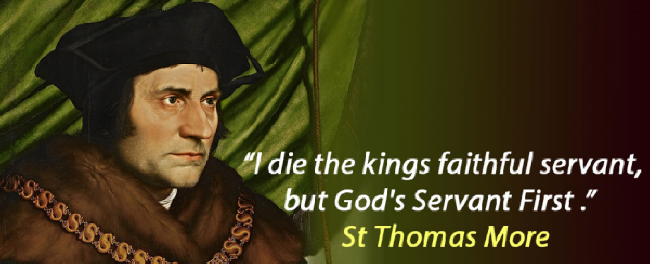
Pope St John Paul II on St Joseph
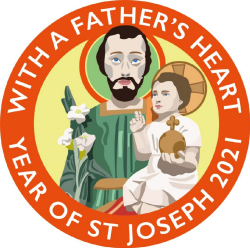
The Evangelists describe him as the caring guardian of Jesus, an attentive and faithful husband, who exercises his family authority in a constant attitude of service.
Nothing else is said about him in the Sacred Scriptures, but this silence contains the special style of his mission: a life lived in the greyness of everyday life, but with steadfast faith in Providence.
Online Resources
Have a look at these websites with religious resources
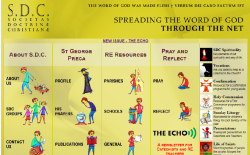
SDC Website
Resources for Catechists and RE teachers. Includes Powerpoints, Worksheets and Lesson Plans for First Communion and Confirmation programmes and a lot more. Click here for resources.
Catechist Magazine
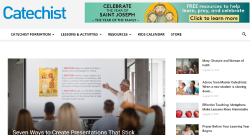
The website of the American ‘Catechist’ magazine. Provides ideas, reflections and resources for catechists in parish religious education programs, and for teachers of religion in Catholic schools. Click here.
Download the pdf version of this issue by clicking here.

Follow us on